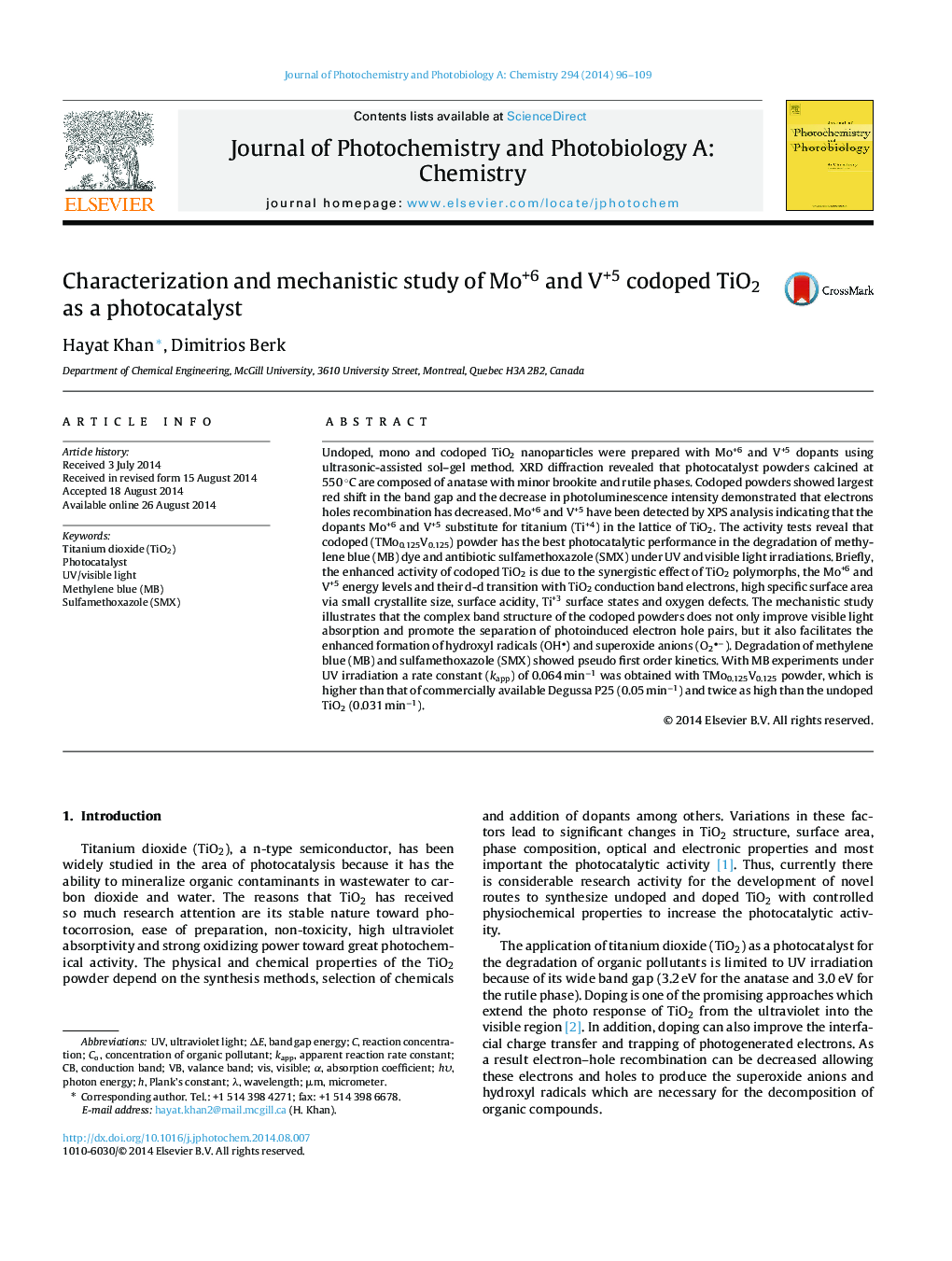| Article ID | Journal | Published Year | Pages | File Type |
|---|---|---|---|---|
| 26142 | Journal of Photochemistry and Photobiology A: Chemistry | 2014 | 14 Pages |
•Anatase-brookite-rutile TiO2 was prepared using ultrasonic-assisted sol–gel method.•Codoped TiO2 lower band gap was due to the cooperative effect of Mo and V dopants.•Mo+6 and V+5 were detected by XPS, substituting Ti in the lattice of TiO2.•MB and SMX showed first order kinectics following Langmuir–Hinshelwood (H-L) model.•0.064 min−1 rate constant of MB degradation under visible light.
Undoped, mono and codoped TiO2 nanoparticles were prepared with Mo+6 and V+5 dopants using ultrasonic-assisted sol–gel method. XRD diffraction revealed that photocatalyst powders calcined at 550 °C are composed of anatase with minor brookite and rutile phases. Codoped powders showed largest red shift in the band gap and the decrease in photoluminescence intensity demonstrated that electrons holes recombination has decreased. Mo+6 and V+5 have been detected by XPS analysis indicating that the dopants Mo+6 and V+5 substitute for titanium (Ti+4) in the lattice of TiO2. The activity tests reveal that codoped (TMo0.125V0.125) powder has the best photocatalytic performance in the degradation of methylene blue (MB) dye and antibiotic sulfamethoxazole (SMX) under UV and visible light irradiations. Briefly, the enhanced activity of codoped TiO2 is due to the synergistic effect of TiO2 polymorphs, the Mo+6 and V+5 energy levels and their d-d transition with TiO2 conduction band electrons, high specific surface area via small crystallite size, surface acidity, Ti+3 surface states and oxygen defects. The mechanistic study illustrates that the complex band structure of the codoped powders does not only improve visible light absorption and promote the separation of photoinduced electron hole pairs, but it also facilitates the enhanced formation of hydroxyl radicals (OH) and superoxide anions (O2−). Degradation of methylene blue (MB) and sulfamethoxazole (SMX) showed pseudo first order kinetics. With MB experiments under UV irradiation a rate constant (kapp) of 0.064 min−1 was obtained with TMo0.125V0.125 powder, which is higher than that of commercially available Degussa P25 (0.05 min−1) and twice as high than the undoped TiO2 (0.031 min−1).
Graphical abstractFigure optionsDownload full-size imageDownload as PowerPoint slide
